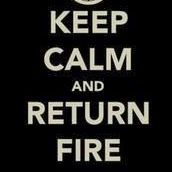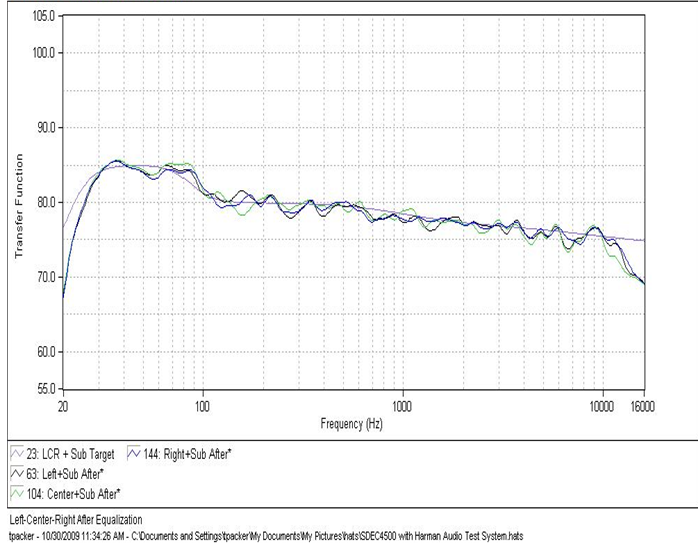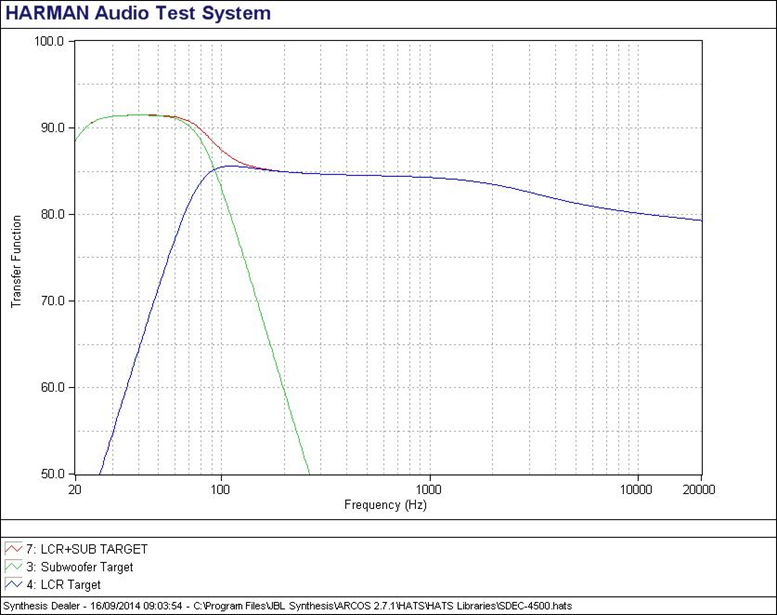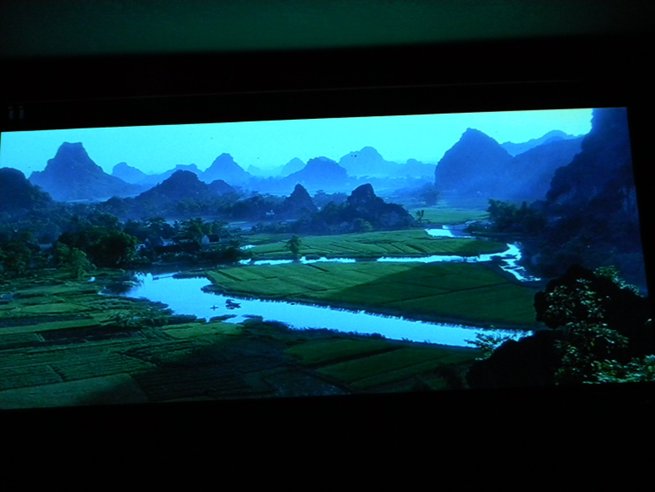-
Posts
4186 -
Joined
-
Last visited
Profile Information
-
Location
The Milky Way
-
Interests
Music, audio, film, psychology, psychology of film, philosophy, religion, history, mythology, audio electromechanical mythology.
-
My System
Main room: 2- 1982 Klipschorns with K-401 fiberglass mid horn upgrade (1987), and AK-4 Klipschorn stock upgrade (2006), Modified Belle Klipsch (2005) center channel with K401 horn in an enlarged hi hat, flush mounted, behind AT wall fabric, buried in the wall between flanking Khorns, 2 NAD C- 272 ss 150 wpc stereo power amps, Marantz AV7005 AV preamp/processor, Heresy II surround speakers driven by 1/2 NAD C-272 and a Yamaha 135 wt amp, NAD C-542 CD player, OPPO BDP-93 CD/SACD/DVD/Blu-ray player, Klipsch RSW-15 subwoofer, for movies only, Panasonic projector, 130" true width 2.35:1 projection screen (141.3" diagonal).
Recent Profile Visitors
11560 profile views
garyrc's Achievements

Forum Ultra Veteran (5/9)
1.9k
Reputation
-
I agree wholeheartedly! My Khorns reveal more than any other speakers I have heard. Now, there are a few horn/lens/drivers, using the JBL 375 (2440 Professional)driver above 500/800 Hz, as used in the Paragon, Hartsfield, and these theater monsters used in the original 70mm Todd-AO theaters (5 complete systems behind a huge curved screen) seem startlingly clear: but I have never heard them sound balanced in a home speaker (in the theater, yes), and in most systems they drop like a rock at about 10K Hz, unless supplemented by a super tweeter (as in the Paragon). Frequency response of the 375/2440: In most systems (not Paragon) the lens looks like this, a work of art: Even if you add a JBL super tweeter like the 075, the Klipschorn sounds more balanced, distinctly warmer, even if not so startlingly clear. I was able to compare the Klipschorn, Paragon, Hartsfield (hardly any bass), B& W 801 F, and several others (Khorn & Paragon in the same room, then Khorn & B&W 801 F sharing another room, others not). Results: Paragon & Hartsfield had the overwhelming clarity of the 375, but otherwise a bit (Paragon) or a lot (Hartsfield) unbalanced, and without the bass impact and balance of the Klipschorn. The B&W 801 F was nice, with a different kind of detail than the Khorns, but it didn't draw me in like the Khorns did, took a much more powerful amplifier for the same SPL, and seemed more bland. The Khorns were much better for brass, etc. Over the years, I have heard many speakers renowned for their detail that have disappointed me in one way or the other. I haven't been able to find good balance, impact, macro and micro dynamics, detail, clarity and spine tingling, emotion boosting, cortex tingling sound in anything except Klipschorns. Caveats: 1) Bad recordings will probably sound bad, unless you can use tone controls or other means to make them good. Classical and Jazz will probably sound good. Some Rock and Metal recordings have had the low bass drained out them, so the upper bass and midrange can be turned up. See Chris A's "The Missing Octave" in this forum, as well as "Corner Horn Imaging." 2) My Khorns sound even better with either Audyssey Flat or Audyssey Reference (depending on the recording) and between 3 dB and 12 dB bass boost. That sounds like a lot, but consider the widespread preference for a variety of curves with the bass about 9 dB or 10 dB higher in SPL than the high treble, such as in the famous Harman curve:
-
Blast from the Past: It turns out that there were 11 versions of the 604, and the first was designed by JBL (the man) when he was with Altec, before he started his new company, JBL. The 604E was the one I was familiar with c. 1974; it sounded much better than it should have 😁, and better than Altec A7s, and several other Altec, JBL, and Westlake monitors in other Bay Area studios. From Wikipedia, "Studio Monitor: "The first high-quality loudspeaker developed expressly as a studio monitor was the Altec 604 Duplex in 1944. This innovative driver has historically been regarded as growing out of the work of James Bullough Lansing who had previously supplied the drivers for the Shearer Horn in 1936, a speaker that had rapidly become the industry standard in motion-picture sound. He’d also designed the smaller Iconic and this was widely employed at the time as a motion-picture studio monitor. The 604 was a relatively compact coaxial design and within a few years it became the industry standard in the United States, a position it maintained in its various incarnations (the 604 went through eleven model-changes) over the next 25 years. It was common in US studios throughout the 1950s and 60s and remained in continuous production until 1998" The first, or near the first, good big theater speakers, 8 feet (or more) tall, including the Shearer were designed by JBL (the man) in collaboration with others. When 70mm film was resurrected, the first 70mm process was Ampex was given the task of developing Todd-AO's sound system. They had JBL (the company) design the speakers. Some Todd-AO theaters used Altec, when both JBL (then a small company) and Ampex couldn't manufacture them fast enough, and or, some theaters already had big Altecs, and only needed to add a few more to accommodate Todd-AO. The JBL design looked like this: Jim Lansing Theatre Sound System of 1954 (Also Manufactured as Westrex T550 and Ampex 6000C) © Harman International, Courtesy Mark Gander and John Eargle 4 - 15 inch woofers, and two of the highest clarity midrange drivers ever, all horn loaded, with an auxiliary port for the lowest bass, times 5 behind the screen channels (and a 6th surround channel pumped to surrounds around the theater. Excellent response 40-10K, with "usable" (JBL's term) down to around 30 Hz. I saw (and heard) 70mm versions of Oklahoma!, Around the World in 80 Days (1956 version), Porgy and Bess and Ben-Hur (1959 version) in theaters using these speakers; I've rarely heard better in any venue to this day. The sound was far better balanced than in the 1977 Star Wars, also 70mm/6 channel in the same theater, with different ("improved") speakers.
-
Large vintage Heritage which were updated in around 2003, or so, have a steep crossover and a different crossover point to the tweeter. Kits from Klipsch might still be available (mine were put in 2005). To me, my Khorns sound better than before the stock AK4/AK5 upgrades (a difference of one resistor, IIRC). My Klipschorns, Belle center, Heresy II surround, with Audyssey, and outboard bass EQ are overwhelming (in a good way) in our combo Music Listening Room and Home Theater. We also have a sub. Some people using Home Theater Receivers inadvertently have "Subwoofer" set to "YES" or "PRESENT," but aren't using a subwoofer! ... or have their main speakers set to "SMALL" with no subwoofer ... any of these could roll the bass off below the typical Xover point of 80 Hz. The "deep bass" part of the spectrum is approximately the octave of 40 to 80 Hz, so you would not want it rolled off at about 12 dB per octave. Klipschorns, in my room, will reach 30 Hz at nearly flat, and about 22 Hz with much attenuation. Kick Drum: According to Art Dudley, better quality vintage speakers have: “Natural-sounding dynamics. Impact. Pluck. Snap. Body—especially body. And Soul.”
-
They used 604Es at Wally Heider recording studio in San Francisco in the early 1970s, powered by McIntosh 275 tube amps. They sounded very, very good. There was some roll-off above 10K Hz and below 80 Hz. Still, they sounded very, very good! We visited the Heider studio in an elective course called "Discover Your Ears," at San Francisco State University. We visited most of the studios in the extended Bay Area, as well as Churches with exemplary pipe organs, like Grace Cathedral, with an antiphonal organ.
-
Reminds me of the veddy, veddy British manual for the SME tone arm in about 1969, in which they cautioned, "Do not take it to pieces." I can't decide whether that is my favorite, or Luxman's use of just the right amount of feedback to "avoid evil effect."
-
Why should I have a separate 2 channel amp?
garyrc replied to gigantic's topic in 2-Channel Home Audio
Looks cozy. I once had 2 Khorns in a approx 1,000 cu. foot room. I'm not counting the very high ceiling, and loft. That would make the total more like the size of yours. I put two Heresy IIs in the loft above and behind the listener, fed through a Lexicon CP-1 ambience creating box (and extra 2 channel amp), but the Khorns did not; they could have been called "pure direct," but this was before the Cambrian Explosion that brought us Audyssey, Dirac, Trinnov, Atmos, etc. The system sounded great, and the room sounded large, with some ambiance coming from above. The only drawback was a sweet spot with good imaging that was between one and two seats wide. In our current room, more like 4,300 cu ft., we have a modified Belle Klipsch center, flush mounted in the wall, with a long K401 horn to match those in the updated Khorns, requiring the Belle to have a new "top hat" in a bump out that goes through the wall. The Belle is sitting on a strong shelf 1" above the RSW 15, with the space between the RSW and the shelf filled with closed cell rubber. Placement took months of experimentation-- we had the sub all over the room -- now, snug in its chamber, the rear of the sub (the electronically powered driver) is loaded by the rear wall of the bump out (5/8" sheetrock, screwed and glued to 3/4" ply, screwed and glued to 2x6 studs, rinse and repeat on the other side of the bump out extending beyond the wall). With ear protection in place, I put my hand between the powered driver and the rear wall of the bump out, and sure enough there is hardly any excursion with the loudest, deepest bass. For some reason, the deepest bass didn't kick in until we used the system for a while, as described in an earlier post. The chamber is 8.5 feet tall, and the angled ceiling of the chamber joins the angled ceiling of the room which slopes up to 11' 8" at the opposite end of the room. My wife calls the chamber the "Garyhorn." The front wall is covered with grille cloth. Oh, my fur and whiskers! Two HT posts - page 283, somewhere here: https://community.klipsch.com/index.php?/topic/42011-lets-see-your-home-theater/page/283/#comments -
Why should I have a separate 2 channel amp?
garyrc replied to gigantic's topic in 2-Channel Home Audio
As do you! What RSWs do you have? I have one RSW 15, and didn't like it much at first -- it sounded a bit "muddy" [compared to the Khorns/Belle/ Heresy IIs, above the crossovers set for each of them] and a REW sweep did not register below 30 Hz, well short of the advertised 19 Hz. I started fantasizing about a DIY 11 foot tall horn loaded sub in a rear corner and also changed the Xovers from 80 Hz to 60 Hz on all but the Heresy IIs, and it sounded cleaner and better, but I didn't rerun REW ... then ... when I finally did run a sweep, from the center seat on the couch, 16 Hz read - 2 dB, and from the far right seat (seat #5) it read -10 dB, but moving the frequency up to 20 Hz produced + 6 dB. Sometime I'll rerun. Someone else got these results: Yellow/Brown line RSW15, Blue/Green Line SVS PB13 -
I am not a Klipsch employee, and never have been, but I've read a great deal of audio since 1959, am a fan, and blissfully live with 9 Klipsch speakers, a wonderful, music loving wife of 47 years, and a music tolerating cat. Paul Klipsch recommended trying any speaker pressed into in a corner (this was before the Forte, and the RP series, etc). He stated that it would be likely to increase the bass by 6 dB [compared to out in the room, where crazy "audiophiles" of the era, as mentioned by @Islander, would likely put their speakers]. To the degree that the greatest power demands are often in the bass, corner placement with a 100 watt ["RMS"] per channel amplifier would be equivalent to using a 400 watt per channel amplifier with the speakers out in the room. Initially, Klipsch speakers were designed to sound good in a "typical" living room, but, as you say, all rooms are different. Other manufactures measured in an ordinary anechoic chamber and aimed for [sort of] flat frequency response and tolerable measured distortion levels in such a chamber. But some speakers need a corner, because the corner is part of the design, so Paul Klipsch had an anechoic chamber built with a revolving door "corner" in it so various corner [and non-corner] speakers could be measured when in a corner. One of Klipsch's goals was to have both good measurements in his special anechoic chamber, and good sound in home listening rooms. Some articles said he found frequency response much less important than low distortion, especially modulation distortion, which some manufacturers ignore. Evidently, Paul felt realistic dynamics to be more important than holding frequency response within +/- 3dB. Originally, he said that to get the "blood stirring" effect of a live symphony orchestra, you need occasional very brief ("instantaneous," probably 1/4 second or less) of 115 dB at your ears, because that's what he measured when recording the Arkansas Symphony. Years later, THX found that instantaneous peaks of 100 dB (110 dB in the bass) is plenty in most home size rooms, with 105 dB (115 dB in the bass) needed in commercial cinemas and concert halls. The silly truth about frequency response is that a certain other company's speaker, costing over $100,000, with advertised frequency response of +/- 1 dB, 20 to 20,000Hz, was measured by a magazine at +/- 5 dB (+4/-6dB)by a magazine, in a real room. Not that +/-5 dB is a bad figure at all, or that I trust the magazine, but that the importance of frequency response is so over emphasized that it seduces marketers. Speaker frequency response in the real world with the availability of room treatments, Audyssey, Dirac, Trinnov, and the lovely return of tone controls, should decline, but flat response sells, where it is there or not. See also, Down with Flat! by J. Gordon Holt, Apr 29, 1985 in Stereophile. Some recordings have improved since he wrote that, and, for me, the moderate treble roll-off (- 5 dB at 16K) of something like Audyssey Reference removes his distortion lurking at the top objection in lesser recordings. For wonderful recordings, like the direct-to- disc Crystal Clear recording, Sonic Fireworks, I enjoy Audyssey FLAT, with the bass turned up, as well. Try Fanfare for the Common Man. Corner Placement was heavily criticized from time to time, and year after year by Consumer Reports, who said that corner placement produced the loudest, but most uneven, bass. I have never been able to duplicate these results with any speaker. Then Don Davis, the studio designer, wrote a great article for Audio magazine in which he said, "Paul Klipsch's advocacy of corner placement for the past 50 years is still correct. Corner placement has the following advantages: The entire audience-coverage angle is within 90°, polar control is excellent at specular frequencies, and the best low-frequency modal response in acoustically small rooms is obtained." There may well be a small caveat. Some stray midrange and treble sound may reach the front and side walls a bit too soon. Putting some absorption on the walls where the off-axis midrange/treble might land before being reflected would probably be helpful. I believe Klipsch measures their speakers with grille cloth on. If you have pets [or kids, or unruly party guests] leave the grilles on. Cats will sometimes eat speaker cones, especially if they have a certain (plastic like) smell. I know that acoustically transparent fabric sounds like "clean coal," but I have my center channel behind a faux wall with AT fabric across whole wall, plus an AT projection screen that comes down in front of it. Audyssey Flat fully compensates for this. Audyssey Reference imposes its own curve if I select it. Of course, I have the screen down when running Audyssey. A slight treble control adjustment ought to make up for any filtering by the grille.
-
[Continued from previous post] Cinerama in our theater (Smilebox) Looking toward the back wall. My wife built the diffusors, and eagerly put them up, along with shelves, absorbers, etc., and solved many problems. For a few films from the magnetic era I sit at the desk behind the couch so I can fluidly ride the Volume control to put back the orchestral and effects dynamics they compressed out, e.g., the ship splintering in Ben-Hur (1959, 70mm and 6 channel ultra dynamic stereo in a 70mm theater), and the music in several places, when they mastered the dialog too high, or the music & effects too low. The volume control manipulations can’t be seen on screen. The Right Font corner. Looking down the right wall. [ran into the 2MB limit again, I guess we don't need the left wall
-
Here is Gary’s and Annie’s Music Room/Library/Home Theater. Captions are below each picture. The room is 25 ft by 16+. wide, with a sloped ceiling, highest in the rear, that averages 10 ft. Full range Audyssey took out a few peaks, and we love the clarity, the convincing tonality, the clean transients, and the effortless, wide, dynamic range. We think our sound closely resembles the character of the orchestras we have listened to “live.” Entering. Annie and I deliberately did not fill the shelves with books, but put art objects and artifacts on them to provide diffusion and slight absorption. The front wall. The wall is covered in fabric, and hides the center channel speaker, which is a modified Belle Klipsch which is flush mounted in a bump-out sticking out of the other side of the wall. Flush mounting gains us 1 to 3 dB in the bass, and some bass extension, as well. It is a good timbre match above the 40 Hz Audyssey measurement says is the F3. The Belle is raised so that the tweeter is the same height as those in the Khorns. We put stock upgrades in the Khorns; they have the same guts as ones made in 2018. The fabric on the wall is acoustically transparent, as is the projection screen. With both fabrics in the way, we get about -1.75 dB at 16K. Audyssey compensates for that. The bump-out also contains a subwoofer, and quite a few diffusers. The front wall with the 130" wide (not diagonal) AT screen down. The screen height is such that someone with tri-focals can see the whole image through the tops of their glasses. Screen shot from the Main Viewing Position. This is what Panavision & CinemaScope look like. [continued on next series I post -- ran into the 2MB maximum]
-
Why should I have a separate 2 channel amp?
garyrc replied to gigantic's topic in 2-Channel Home Audio
(4) My surrounds are Heresy IIs, which aren't as good as my front speakers (updated Klipschorns and a modified Belle Klipsch center), IMO, but keeping bass out of the H IIs, letting a sub do it, worked wonders. My FL, FR, and C crossover to the sub at 60 Hz, and the H IIs crossover at 80 Hz. (5) See (4) ....................... Many SACDs of classical and some of jazz are still available, including some new issues. -
Why should I have a separate 2 channel amp?
garyrc replied to gigantic's topic in 2-Channel Home Audio
It's terrific with SACD multichannel 5, 5.1, and reissues of "Quad." It's still pretty good with 2 channel sources and PLII Music. I resisted it for a while, then tried it, and am now in love with it. -
My guess is Forte IV plus (now or eventually) a very good subwoofer cut in at about 60 Hz, about 3 to 6 dB higher SPL than flat. Does your preamp, integrated, or receiver have a subwoofer output? I "managed" a pair of Klipschorns in a room your size for a while. The only disadvantage was that the "sweet spot" was only 1 chair wide.



.thumb.jpg.b17aa177a6f4e1497ac4340ed5725674.jpg)























